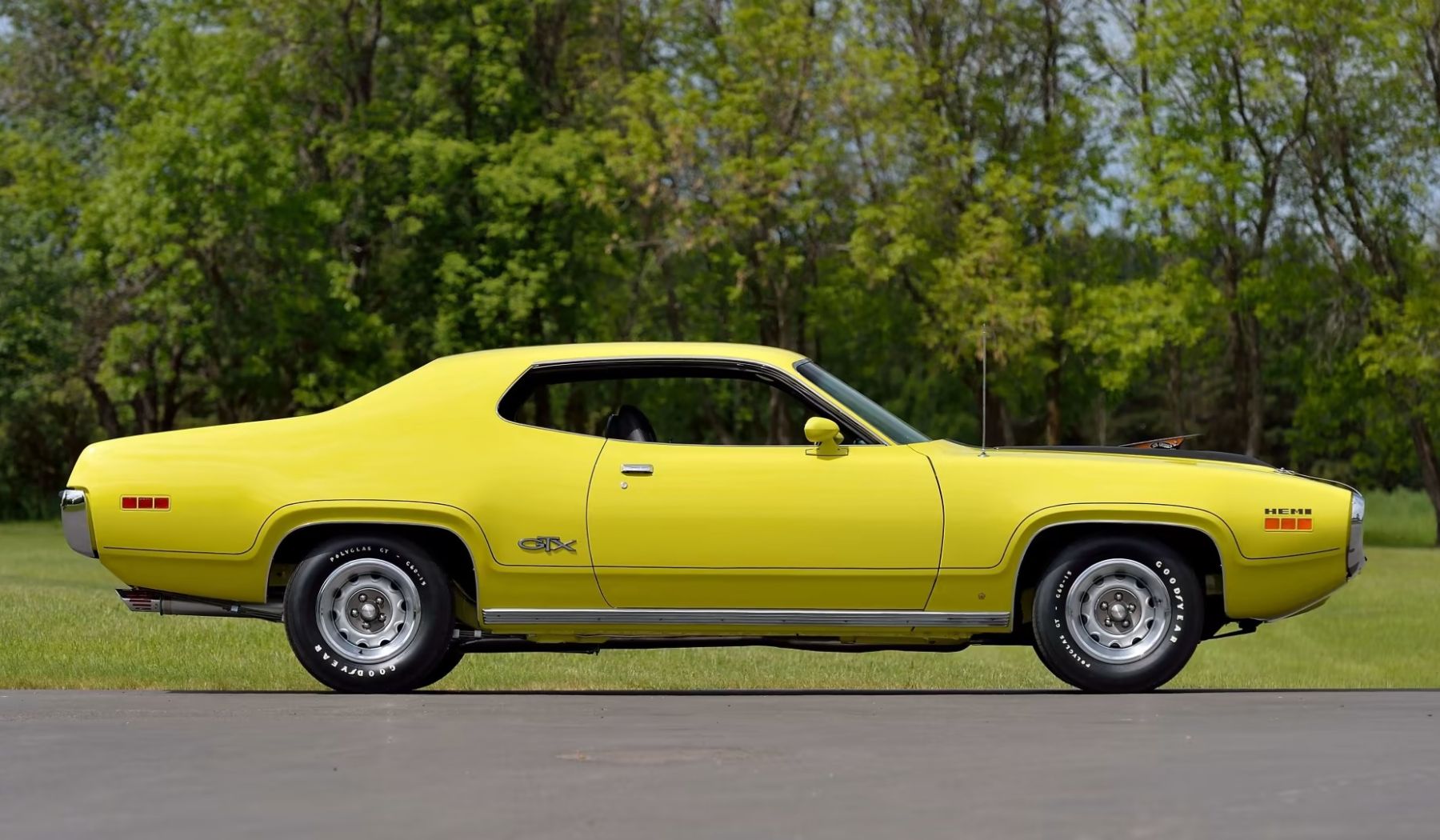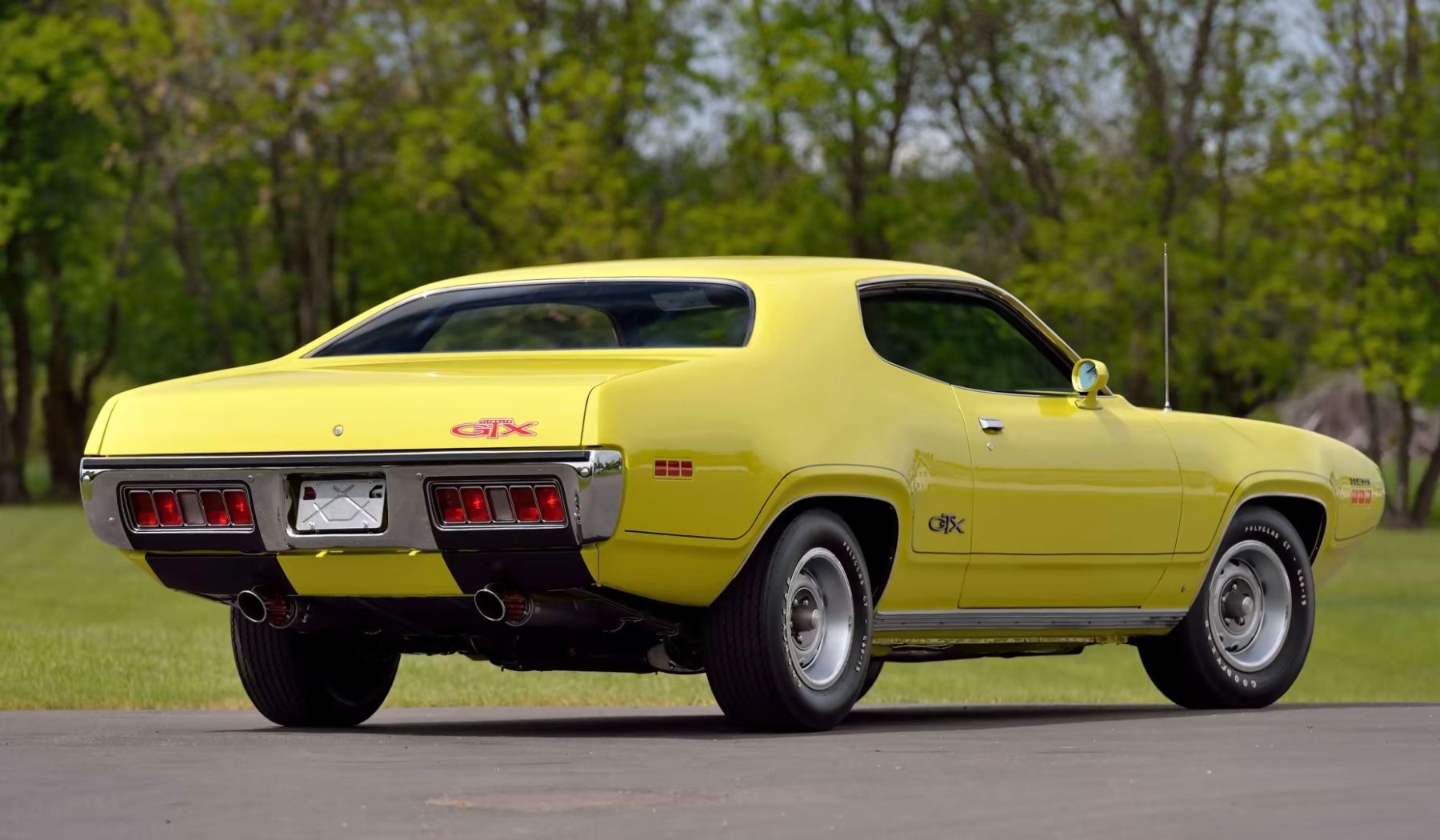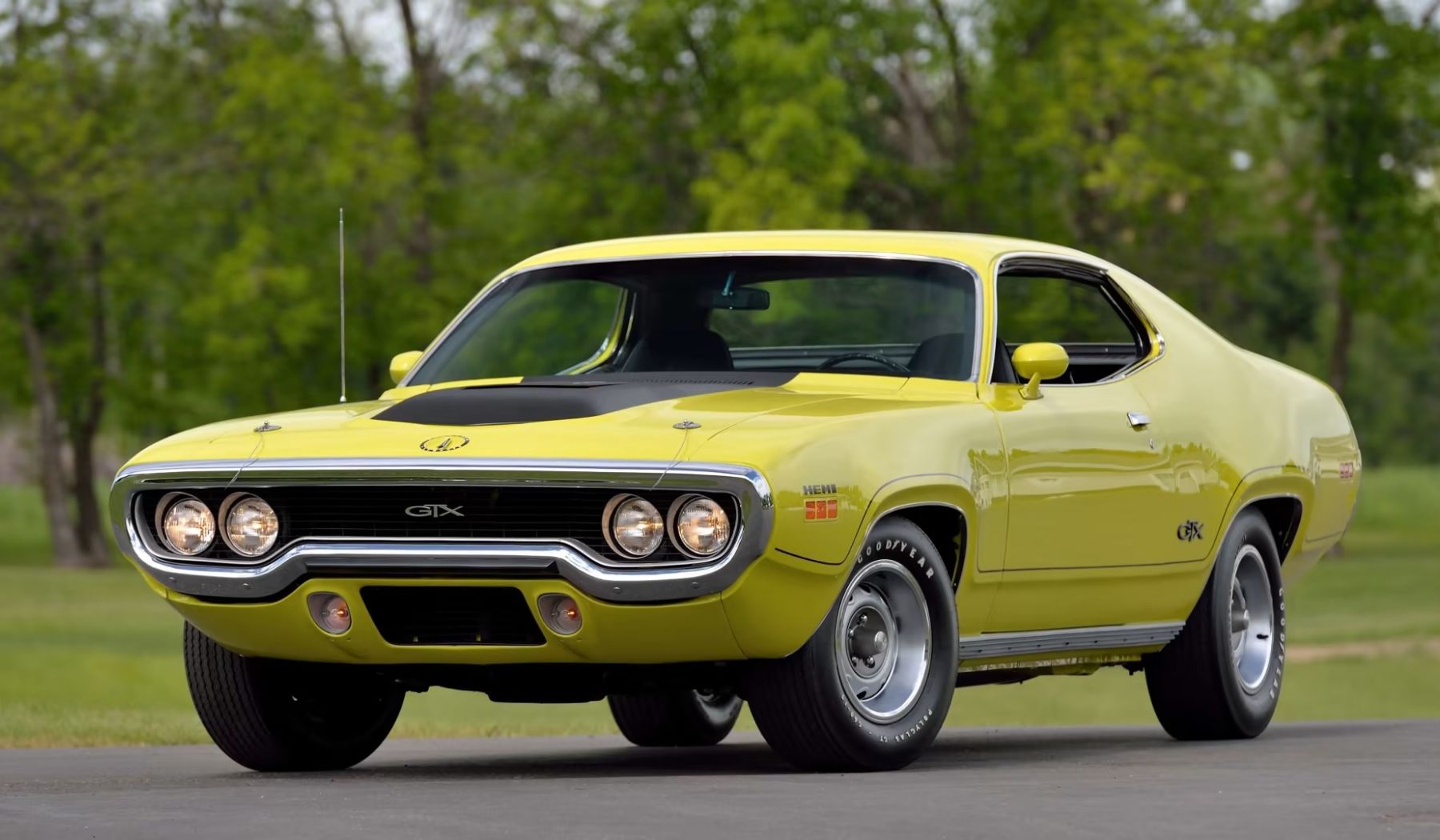The year 1971 marked a pivotal moment in the muscle car era, as sales plummeted across the industry, signaling the approaching demise of these high performance vehicles. Despite this industry wide downturn, Plymouth remained committed to the muscle car spirit, introducing a redesigned GTX model that featured the legendary Elephant engine for one final time.
This iconic muscle car, known for its powerful performance and luxurious interior, solidified its place in automotive history. The 1971 GTX boasted a redesigned body that was a departure from the boxy shapes of previous generations.
Inspired by the F-4 Phantom fighter plane, the new design featured a daring chrome “loop bumper,” a blacked-out grille, dual headlights, and a semi fastback style roofline.

The interior of the GTX was equally impressive, featuring standard bucket seats borrowed from the ‘Cuda and an abundance of vinyl upholstery and faux woodgrain trims. Under the hood, the GTX continued to be powered by the legendary Elephant engine, a 426-cubic-inch V8 that delivered an impressive amount of power.
This engine, coupled with the car’s robust suspension and performance-oriented features, made the GTX a formidable force on the road. Despite the declining muscle car market, the 1971 GTX remains a cherished and sought after vehicle among enthusiasts. Its timeless design, powerful performance, and luxurious interior make it a testament to the enduring appeal of classic muscle cars.
The 1971 Plymouth HEMI GTX, a muscle car icon, featured a revamped chassis and an all-new body, but under the hood, the changes were minimal. Despite emission restrictions, the standard 440 engine produced a respectable 370 horsepower. Optional engines included the 385-hp Six-Pack and the legendary 426 Elephant engine, which boasted 426 horsepower.
However, the 1971 model year marked the end of the HEMI engine in Mopars due to stringent emissions regulations, rising insurance premiums, and a high price tag. The standard transmission was a column shifted TorqueFlite automatic, but a console shifter and a four-speed manual with a Hurst Pistol Grip shifter were available options.

The HEMI GTX also featured a beefed up suspension and power front disc brakes as options. Despite its impressive performance, the 1971 GTX failed to achieve significant sales, with only 2,942 units sold, including 30 HEMI-powered models.
This was primarily due to the changing automotive world, as consumers increasingly sought fuel efficient and affordable vehicles. Today, however, the HEMI GTX is a highly sought after muscle car, commanding prices over $200,000 for original, restored examples.
Its rarity, powerful engine, and distinctive styling have made it a coveted collectible among enthusiasts. The HEMI GTX’s legacy as a muscle car icon continues to fascinate and inspire future generations of automotive enthusiasts.

